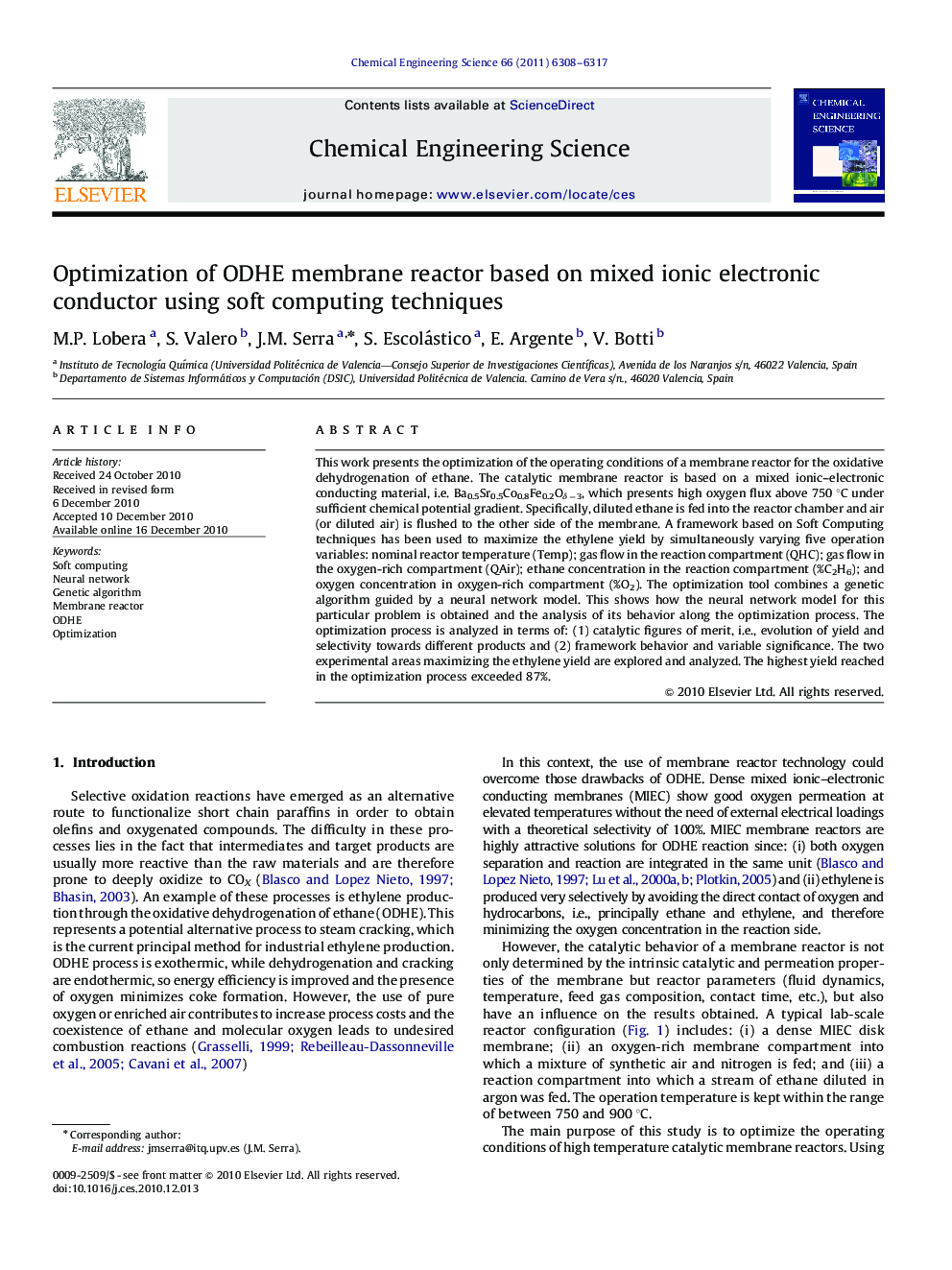| Article ID | Journal | Published Year | Pages | File Type |
|---|---|---|---|---|
| 155947 | Chemical Engineering Science | 2011 | 10 Pages |
This work presents the optimization of the operating conditions of a membrane reactor for the oxidative dehydrogenation of ethane. The catalytic membrane reactor is based on a mixed ionic–electronic conducting material, i.e. Ba0.5Sr0.5Co0.8Fe0.2Oδ−3, which presents high oxygen flux above 750 °C under sufficient chemical potential gradient. Specifically, diluted ethane is fed into the reactor chamber and air (or diluted air) is flushed to the other side of the membrane. A framework based on Soft Computing techniques has been used to maximize the ethylene yield by simultaneously varying five operation variables: nominal reactor temperature (Temp); gas flow in the reaction compartment (QHC); gas flow in the oxygen-rich compartment (QAir); ethane concentration in the reaction compartment (%C2H6); and oxygen concentration in oxygen-rich compartment (%O2). The optimization tool combines a genetic algorithm guided by a neural network model. This shows how the neural network model for this particular problem is obtained and the analysis of its behavior along the optimization process. The optimization process is analyzed in terms of: (1) catalytic figures of merit, i.e., evolution of yield and selectivity towards different products and (2) framework behavior and variable significance. The two experimental areas maximizing the ethylene yield are explored and analyzed. The highest yield reached in the optimization process exceeded 87%.
